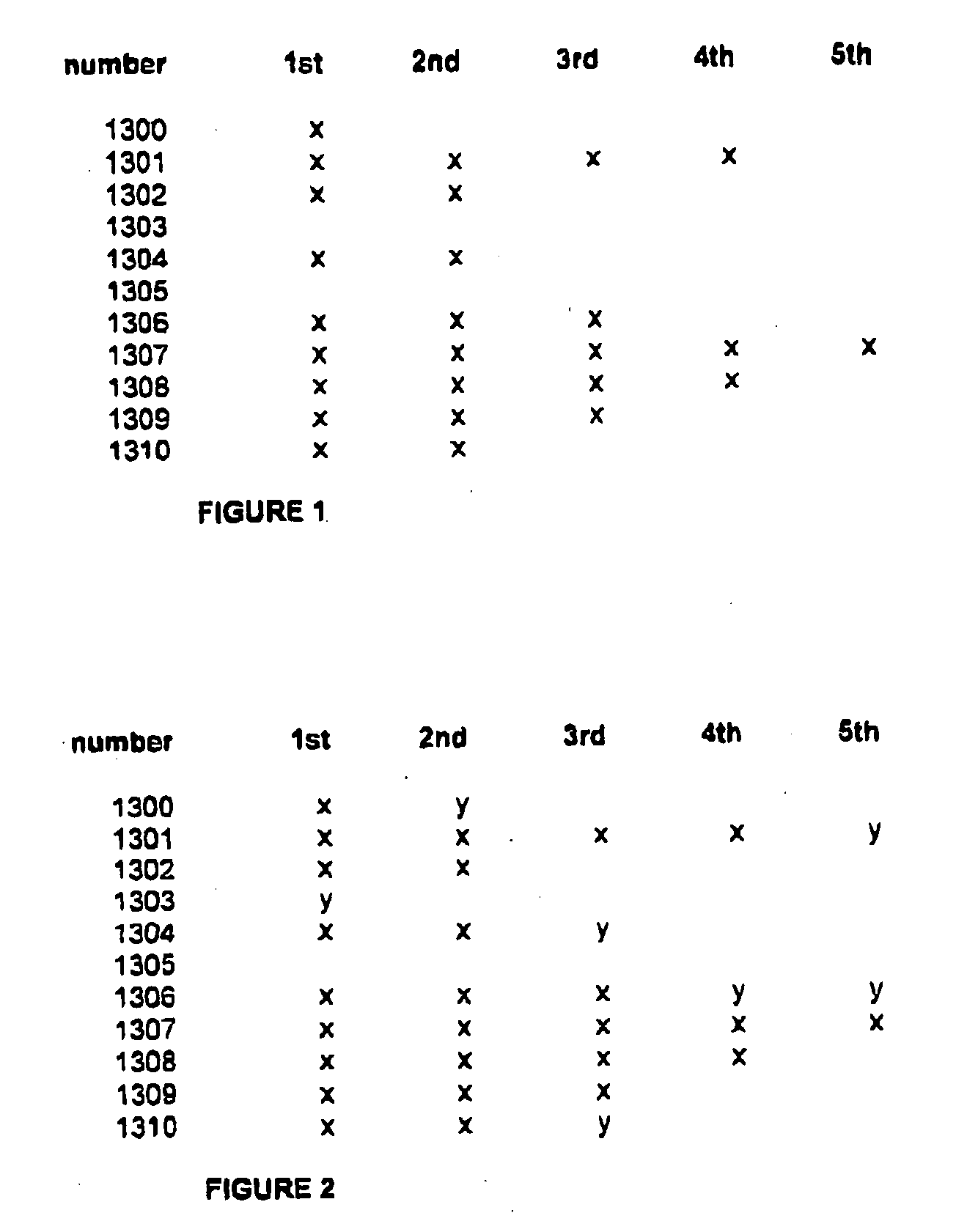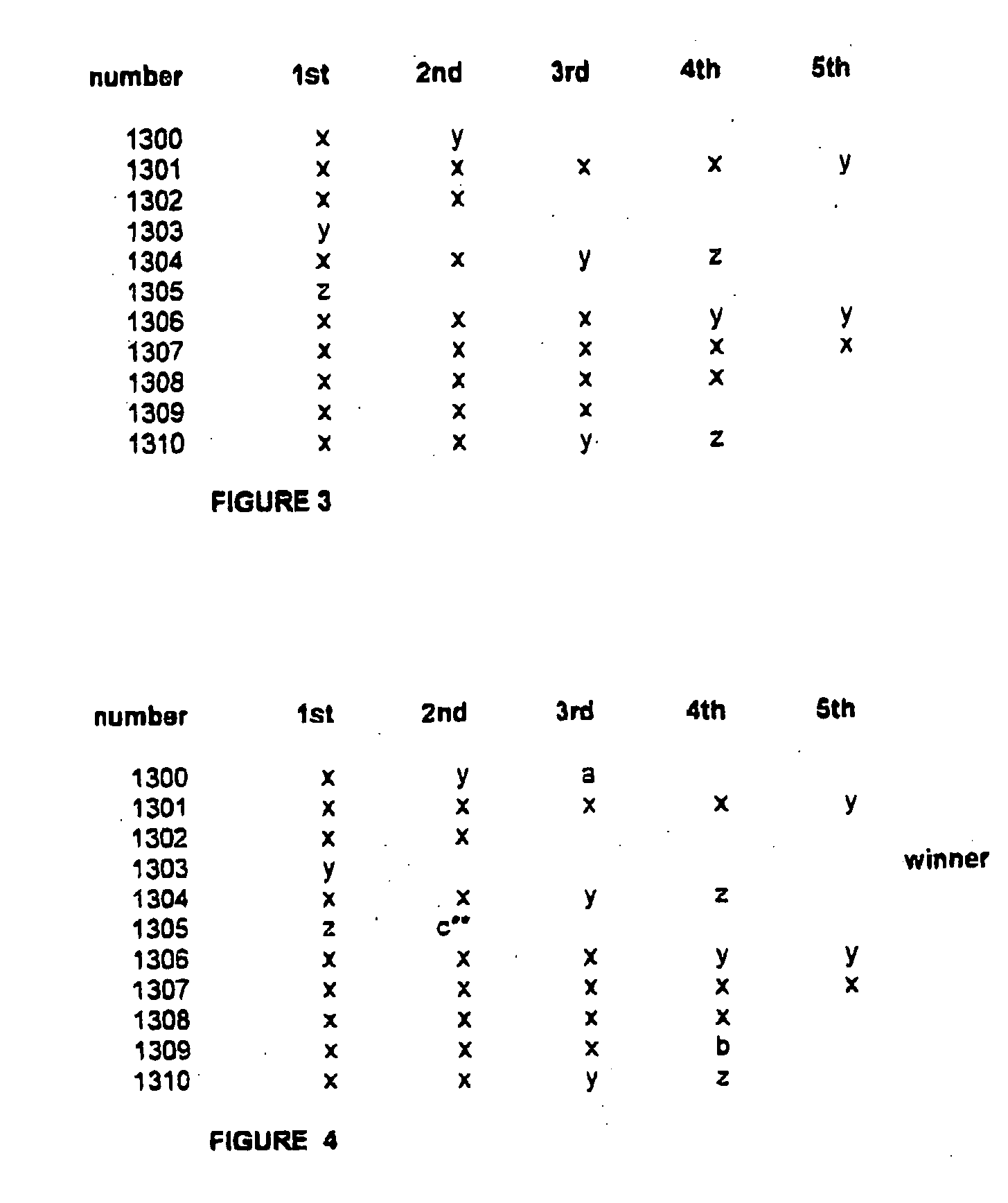Lottery system
a technology of lottery system and ticket, applied in the field of lottery system, can solve the problems of customers having to go and customers having to retain tickets, and achieve the effect of reducing interference or fraud
- Summary
- Abstract
- Description
- Claims
- Application Information
AI Technical Summary
Benefits of technology
Problems solved by technology
Method used
Image
Examples
example 2
[0054] It is possible to vary the rules of the competition to stop the competition after a defined number of entries have been recorded, or after a defined time, or after some other event, and the database then analysed to apportion the pool of prize money (less any operating expenses or profits for the promoters) between the numbers chosen.
[0055] It is also possible that the system may be cut off at a particular date or time, and then run in a "virtual mode" live on television so the winner is technically selected on the spot. This would allow people to watch the process happen on live television.
[0056] One way this could be done would be to stop any other entries from participants, and to use a random number generator to populate the numbers, until all but one number was eliminated from the competition. That would enable the count down process to be observed, and maintain the random nature of the competition, whilst allowing the competition to run until there was a single winner. ...
example 3
[0061] It is preferred that the lottery engine is capable of receiving information from participants preferably by telephone, or by email, or direct keying of numbers at a kiosk, or through a keypad associated with an interactive digital television, via an SMS message from a cellphone, or some other mechanism in which the participant can communicate directly with the interface device used to accept and then buffer entries prior to them being inserted into the lottery engine.
[0062] For example in the case of an entry via a touch-tone telephone keypad using an 0900 number, the rules of the competition will have been advertised, and the participant will know that if they dial that 0900 number they will be charged a fixed price, perhaps $1 per entry (this is better than charging on a time basis) and that they will then be given a brief message, this could simply be a recorded message that says "cost of entry in this competition is $1 to be debited against your telephone account, your te...
example 4
[0073] In this example it may be preferable to require participants to pre-register, for example registering with an entity that allows for telephone betting such as the TAB (the Totalizer Agency Board in New Zealand, or in NSW, Australia) and opening a telephone account, paying money into that account so that the telephone account can be debited each time the participant enters a new number. It is unlikely there would be any restriction on the number of entries per participant, the total cost of entries (and amount left in the telephone account) being the barrier for the number of times that participant has entered the competition. Telephone entry could then be via a local number or toll free number (l-800 number)
PUM
 Login to View More
Login to View More Abstract
Description
Claims
Application Information
 Login to View More
Login to View More - R&D
- Intellectual Property
- Life Sciences
- Materials
- Tech Scout
- Unparalleled Data Quality
- Higher Quality Content
- 60% Fewer Hallucinations
Browse by: Latest US Patents, China's latest patents, Technical Efficacy Thesaurus, Application Domain, Technology Topic, Popular Technical Reports.
© 2025 PatSnap. All rights reserved.Legal|Privacy policy|Modern Slavery Act Transparency Statement|Sitemap|About US| Contact US: help@patsnap.com



